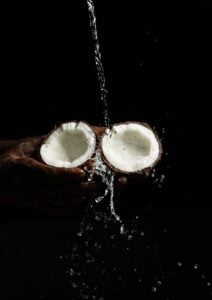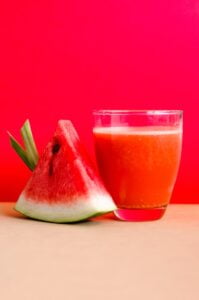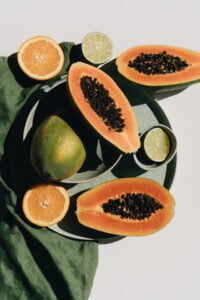YUMMY VALLEY’S SALE 🎁
Free Millet Mojo Snack With Millet Muesli & Porridge Mixes
COD Available for Orders Above ₹299
- Your cart is empty
- Continue Shopping
Top 6 Summer Food for Babies: Quick Remedy for Dehydration in Babies
- Published on:
- Last update: 13 November 2023
- This post has just been created. Stay tuned for updates and additional content.

Babies and toddlers can have a difficult time during the summer. As a result of the heat, your baby may become cranky, irritable, and sweaty and have difficulty eating. Babies often suffer from loss of appetite and dehydration during this phase – a worrying sign for us moms. The child could be affected by either of these conditions if they don’t receive enough nutrition and fluids as required by their bodies.
Table of Contents
Toggle
Best Summer Foods For Babies
Let’s get down to the meat and potatoes of what your baby should be eating this summer. You may notice that your little one feels uncomfortable and heavy when eating Indian food like sabzi and roti. Even though these foods are undoubtedly good for you, it is advisable to balance them with lighter foods that are easier on your stomach. Here find the summer food that works for you.
To keep your baby cool, nourished, and protected against dehydration this summer, here are the best foods to feed him. Here are foods and drinks for babies who have been introduced to solid foods and are at least 6 months old.
Coconut Water

Your baby’s body will be replenished with fluids after drinking coconut water, particularly if he has sweated a lot and lost a lot of water. When dehydration occurs, plain unsweetened coconut water works best.
The potassium in coconut water helps regulate the body’s temperature. Additionally, coconut water keeps your digestive system lubricated and cools the body. According to research, coconut water is electrolytically balanced, much like human blood. Coconut water is a go-to solution for dehydration in babies.
For babies over six months, coconut water is easily digestible since it contains the same amount of lauric acid as breast milk. Additionally, it has no further cooking requirements and is sterile and perfectly safe. You can serve it directly to the baby or make other meals like cereal.
Lemonade

The combination of lemonade and fresh mint leaves…yum! This classic beverage combats dehydration successfully. Lemonade can be made in large quantities and stored in the refrigerator. When the heat outside becomes unbearable, offer your child this drink!
Your baby should stay healthy and hydrated during the hot summer months by drinking these summer foods and drinks. However, if your baby continues to have feeding problems and loses weight, it is best to consult your doctor to determine whether your baby has a stomach bug.
Watermelon

When thinking about summer foods, the first thing that comes to mind is watermelon. That’s not surprising, considering they are almost 90% water. You cannot think of anything more moisturizing than that!
As well as hydrating, watermelons are abundant in vitamins, mainly containing vitamins A and B. In addition to containing antioxidants, watermelons also contain lycopene, which enhances skin health.
In some cases, melons may cause allergic reactions; therefore, watermelons are recommended to be introduced after 8 months of age. It is possible to introduce watermelons earlier in situations where there is no one in the family with food allergies or sensitivities.
It is best to cut out the flesh to ensure there is no rind left in the watermelon when feeding babies. Make sure all seeds have been removed. Depending on your needs, you can mash it into a puree, prepare it in chunks or sticks, or serve it as a portion of finger food.
Yoghurt
There are times when the solution to a specific problem is right there before us, yet we only become aware of it later! Curd, the Indian equivalent of yoghurt, is traditionally served every meal, but its probiotic properties have recently gained attention.
As well as being an excellent digestive aid and the perfect cooling summer food, probiotic yoghurt is an excellent source of probiotics. In addition to providing babies with protein and calcium, yoghurt also offers probiotics, which boost immunity, improve skin appearance, and support the healthy tooth and bone development. It acts as a quick solution to dehydration in babies.
Since yoghurt does not contain lactose, it is an exception to the recommendation not to give baby milk under one year of age. Introducing it as early as six months is comfortable for babies since it is easily digestible.
Bananas
Many people don’t realize that bananas are a great summer food, but they are among the most popular foods for babies worldwide. Using bananas as astringents will enable the body tissues to absorb more water, thereby cooling the whole body. Try raw banana powder to obtain the most nutrients.
The potassium content of bananas is probably its most distinguishing characteristic. The potassium in a medium banana prevents dehydration during the summer months. In addition to providing energy, bananas also provide nutrients such as Vitamins B6, C, magnesium, and antioxidants.
Since bananas are easily digestible and unlikely to cause allergic reactions in babies over six months, bananas are ideal for them. If bananas are mashed, they can be served as finger food or cut into chunks as a dessert. In addition to using bananas as a natural sweetener, mashed bananas can also be used as a baby food sweetener.
Papaya

There are papaya trees in most Indian backyards, making this fruit a staple in Indian recipes. Papayas are enjoyed raw and ripe, but many don’t realize that they are a great summer fruit.
Nearly 90% of the papaya’s weight is made up of water. In addition, papaya contains an enzyme called papain that promotes digestion, so the body doesn’t have to use more energy to digest it. Furthermore, papayas contain various nutrients, meaning that they are even used in some traditional treatments. It is one of the best summer foods that acts as a solution for dehydration in babies.
The papaya contains many nutrients, including vitamins A and C and folate and beta carotene. Papayas contain many antioxidants, so they help prevent disease. Furthermore, they prevent constipation and inflammation.
Papayas are great for them after introducing other essential first foods to an infant over 7-8 months.
Due to the ripe papaya’s natural sweetness, it can easily be mashed and fed to babies.
This Summer, Cool Off.

Heatstroke, dehydration, heat rash, sleeplessness, and others can be caused by the summer season. The weather is hot and humid, so most of us stay indoors and use fans and air conditioners to keep cool during this time of year. Likewise, loose clothing made of cotton and light-coloured clothing can also be helpful! Summer is a fantastic season. Choose the best summer foods as a solution for dehydration in babies. The summer holiday season is right around the corner! As a family, enjoy the warmer summer months together, but remember to stay cool this summer by taking proper measures to keep your child’s body cool and relaxed. Maintain a healthy diet that includes these superfoods and keep the baby hydrated with adequate amounts of water.
Source: summer food for babies.

